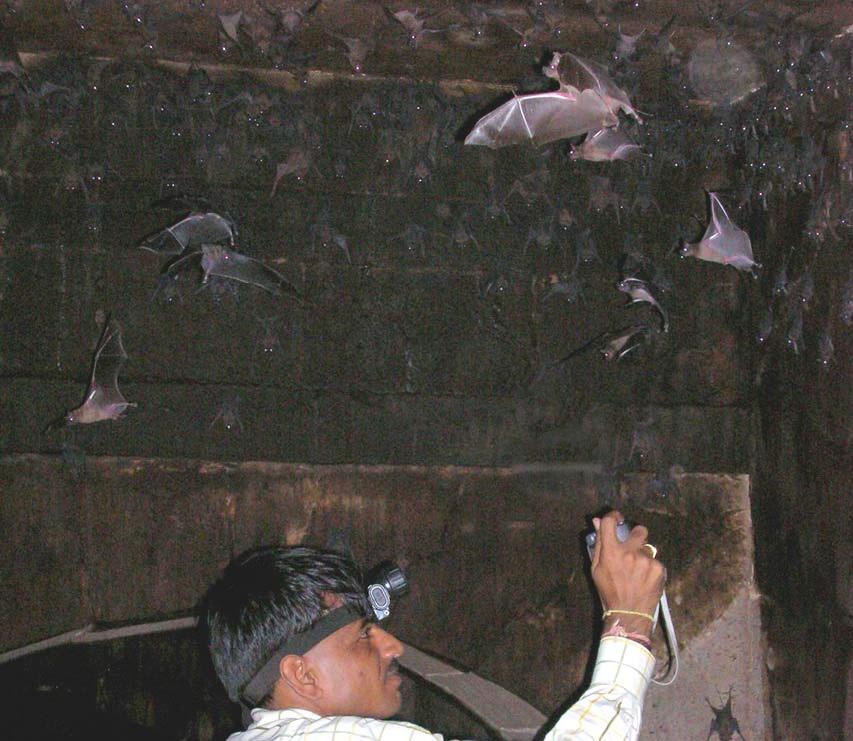K. R. Senacha
Other projects
26 Jul 2010
Status Survey and Conservation Education Campaign: A Community Participation Approach to Protect Bats in Rajasthan, Part of the Thar Desert
21 Jun 2012
Status Survey and Conservation Education Campaign: A Community Participation Approach to Protect Bats in Jalore and Barmer Districts of Rajasthan, Part of the Thar Desert, India
The project aims to investigate the current status of chiropteran diversity and undertake a conservation education campaign to save the bats in Jodhpur district of the Thar desert in Rajasthan state of India, through community participation.

Principal investigator surveying the bat roosts.
Bats being pollinators, seed dispersers and by preying upon variety of insects contribute remarkably to ecosystems and environment we live in. An insectivorous bat may consume hundreds of insects per hour, while large colonies claim tonnes of insects each night, including beetle and moth species that otherwise cost farmers and foresters billions of rupees annually. Frugivores bats pollinate at least 500 neotropical plant species of 96 genera, disperse seeds for many and play vital role in the global ecosystems.
Jodhpur district (22,850 km2) of Rajasthan state remained a hotspot for chiropteran diversity in the Thar, hot desert ecosystem of India (Fig.1). It had 12 species of bats out of 15 reported entirely across the Rajasthan part in the Thar till early 1980s. Bats were ever misunderstood and ignored by people in this area, as they are neither aware of ecological significance of bats nor know precisely about their nature. Area is flooded with two strong myths, some believe bats attack on nose and suck our blood and others consider them a sign of sin, destruction and poverty. Four species of bats (Megaderma lyra, Pipistrellus dormeri, Hipposideros fulvus and Tadarida aegyptiaca) and various roosts reported here earlier have vanished over last two decades. Habitat destruction by anthropological factors is the foremost reason for this depletion and I therefore purpose to start conservation awareness campaign to protect diversity of bats in this study area through this grant.
Majority of bats roosts here either in historical monuments (forts and havalies) or in dilapidated buildings and unused wells that are in direct approach of people. They therefore are prone to face anthropological disturbances due to renovation activities and by the virtue of existing myths. People here dislike bats and do not appreciate their existence in proximity of human habitation. This leads intentional damage to bat roosts. Conservation education campaign aimed here would inculcate the sense of appreciation among locals and would change their attitude for bats. We would target to educate the children and youths of this region at schools and collages, and elders that live in vicinity of existing roosts, about ecological significance and nature of bats.
This exercise will sweep out existing myths on bats from mind of locals and would help to turn them into a lifelong admirer of bats. People therefore will start appreciating the presence of bats in their vicinity and would provide them protection at their roosts. Activities of purposed bat clubs through this project will be a source to teach the future generations about bats in this area. Overall, eliminating myths about bats from locals and inculcating sense of appreciation for these animals would be sustainable approach for the conservation of bats in this region. Beside this, the data generated through survey on current status of chiropteran diversity in this reason would be a scientific asset.